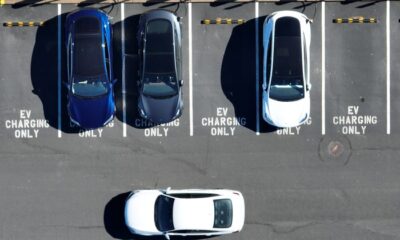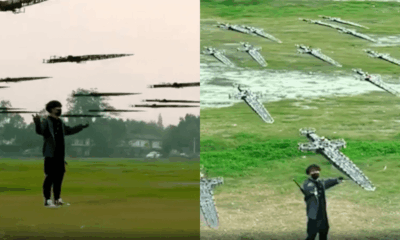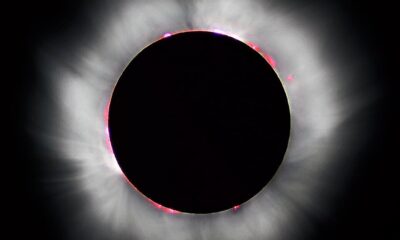Science
Researchers Enhance Tracking Precision for Aerial Defense Systems
In a significant advancement in defense technology, researchers from the National University of Defense Technology in China have developed a method to enhance the precision of tracking small, low-flying aerial targets. These “low, slow, and small (LSS)” targets pose heightened challenges for existing radar systems, making accurate detection increasingly critical. The study, led by Cheng SHEN, Zhijie WEN, Wenliang ZHU, Dapeng FAN, and Mingyuan LING, focuses on correcting small tracking errors that significantly impact the performance of intelligent electro-optical detection systems (EODS).
The research identifies that small tracking errors are influenced by several factors, including the limitations of image tracker frame rates, lens resolution, and hardware computing power. These issues result in system overshoot and oscillation, which complicate the strict requirement of controlling tracking errors within 1 mrad for long-range precision shooting. Traditional methods to improve precision often overlook the necessary integration of image processing and servo dynamics, leading to slow dynamic responses.
To address these challenges, the team proposes a comprehensive approach that incorporates mechatronics drive modeling, composite velocity–image stability control, and an improved interpolation filter design. They introduce a tracking controller delay prediction method based on the Euler transformation model. This model focuses on a two-axis, two-gimbal cantilever beam coaxial configuration, allowing for a clearer understanding of the feedback dynamics between the tracking controller and the motor’s velocity–stability loop.
In their innovative approach, the researchers established a segmental interpolation filtering algorithm that combines line-of-sight (LOS) position correction with multivariable tracking fault diagnosis. This algorithm effectively compensates for the time delays that arise from the non-uniform discrete sampling of image data, enhancing the overall tracking precision.
The effectiveness of the new method was tested using a 2-degree-of-freedom platform that simulated an LSS moving target at a tracking distance of 100 meters, with a target area of 1 m² and a linear velocity of 5 m/s. The results demonstrated that the optimized method achieved a tracking error distribution probability of 66.7% within a radius of 1 mrad. In contrast, the traditional method only managed a probability of 41.6%. Furthermore, the LOS shooting accuracy improved by 37.6% with the new approach, significantly reducing the impact of tracking errors.
This research, titled “Small Tracking Error Correction for Moving Targets of Intelligent Electro-Optical Detection Systems,” showcases a promising advancement in the field of defense technology. By addressing critical challenges associated with tracking small aerial targets, this work not only enhances operational capabilities but also contributes to the broader understanding of intelligent detection systems.
For further details, the full text of the paper is available at: https://doi.org/10.1007/s11465-024-0782-6.
-

 Technology5 months ago
Technology5 months agoDiscover the Top 10 Calorie Counting Apps of 2025
-

 Technology3 weeks ago
Technology3 weeks agoOpenAI to Implement Age Verification for ChatGPT by December 2025
-

 Health3 months ago
Health3 months agoBella Hadid Shares Health Update After Treatment for Lyme Disease
-

 Health3 months ago
Health3 months agoAnalysts Project Stronger Growth for Apple’s iPhone 17 Lineup
-

 Health3 months ago
Health3 months agoErin Bates Shares Recovery Update Following Sepsis Complications
-

 Technology5 months ago
Technology5 months agoDiscover How to Reverse Image Search Using ChatGPT Effortlessly
-

 Technology3 months ago
Technology3 months agoElectric Moto Influencer Surronster Arrested in Tijuana
-

 Technology2 months ago
Technology2 months agoDiscover 2025’s Top GPUs for Exceptional 4K Gaming Performance
-

 Technology5 months ago
Technology5 months agoMeta Initiates $60B AI Data Center Expansion, Starting in Ohio
-

 Technology5 months ago
Technology5 months agoRecovering a Suspended TikTok Account: A Step-by-Step Guide
-

 Health5 months ago
Health5 months agoTested: Rab Firewall Mountain Jacket Survives Harsh Conditions
-

 Lifestyle5 months ago
Lifestyle5 months agoBelton Family Reunites After Daughter Survives Hill Country Floods





















